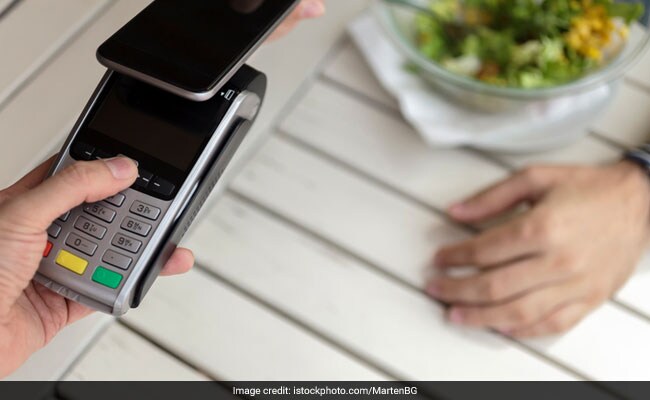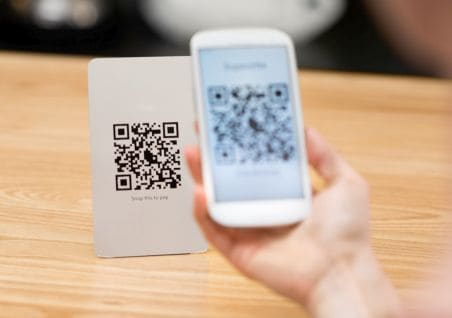- Cashless Bano India/
- Features/
- Decoding The Cashless Behaviour: Dip In Debit Card Usage, Rise In E-Wallet Payments
Decoding The Cashless Behaviour: Dip In Debit Card Usage, Rise In E-Wallet Payments

Highlights
- Debit card transactions amounted to Rs 32,500 crore in May 2017
- The availability of cash post demonetisation has discouraged card usage
- UPI based payments have seen strong growth despite cash availability
New Delhi: India's transition towards a cashless economy is gaining ground and notable improvements in the last six months have been visible. Digital transactions and usage of mobile banking has seen upward spikes, as shared by Prime Minister Narendra Modi on his website. The government's digital push has also been extensive, trying to reach out to rural and remote areas and convince people to go cashless. While there has been definitely an increase in digital transactions, the peak which was reached in December 2016, a month after demonetisation, has not been replicated since. This brings forward the question of sustainability of cashless methods and their adoption by people.
The Reserve Bank of India declared that debit card usage in India rose to 41.5 crore in December 2016 from 23.6 crore in November 2016. Within a month, the value of transactions via debit cards rose to Rs 58,000 crore from 32,200 crore in the previous month. But post December 2016, when the cash scenario improved, the number of debit card users began decreasing. May 2017 saw total debit card transactions amount to Rs 37,500 crore, a little over the amount recorded in November 2016. The habit of opting for cash transactions had hit a hurdle with demonetisation, but with improved cash availability, the usage of debit cards has come down significantly.
Habitual factors are the dominant ones as to why debit card usage has not sustained the peak it went through during December 2016. From consumers to small traders, cash is still the preferred mode of transaction for many. The hacking of 32 lakh debit cards in October 2016 was another incident that contributed to the apprehension related to usage of debit cards. People in rural and semi-urban areas went back to using cash as that had been their preferred mode of transaction for years. The decrease in usage of debit cards shows that even the simplest method of cashless transaction was not preferred by many over cash.
Does it mean that India's transition to a cashless economy is not going smoothly? Demonetisation has definitely contributed in the transition to cashless. More than 11 lakh point of sale (PoS) terminals have been set up by nationalised and private banks together, post November 2016. Mobile banking has also seen a huge upsurge in numbers, with a jump to Rs 10,572 crore in 2016-17 from Rs 224 crore in 2013-14. But the habitual change is still not become synonymous with the economic behaviour of the population. Being a cash dependent society, the behavioural transition from cash to debit cards is yet to be achieved throughout the country, and will take time to reflect wholly across India.
If debit card usage across the country has failed to sustain the peak it achieved during demonetisation, Unified Payments Interface developed apps such as Bharat Interface for Money (BHIM), Phone Pe, SBI Pay etc. have recorded stronger usage numbers since December 2016. From 20 lakh users in December 2016, the number of users has risen up to 1 crore in June. The value of transactions also jumped to over Rs 3,000 crore from Rs 700 crore. The easy interface of UPI based apps, along with the option of quickly transferring money across bank accounts has found favour among users, resulting in their gradual adoption of the system. Though there's much ground to cover, UPI based apps can gradually form ma strong user base in India's journey towards digitisation.
As for other methods of cashless payments such as debit cards, the infrastructure is not yet in place to expect overnight transition to a cashless economy. Small traders and consumers in areas with low internet connectivity cannot be expected to rely on PoS machines. While the surge in debit card transactions post demonetisation came mostly due to lack of options, the habitual change is yet to be achieved. Even government provided incentives cannot continue forever to ensure that people shift towards cashless transactions. Once people become seamlessly habituated to the hassle free cashless systems of transactions, the shift will come from within, as witnessed with the rise of UPI transactions.
Also Read: Digital Transactions Rising In Unorganised Sector: NITI Aayog
The Reserve Bank of India declared that debit card usage in India rose to 41.5 crore in December 2016 from 23.6 crore in November 2016. Within a month, the value of transactions via debit cards rose to Rs 58,000 crore from 32,200 crore in the previous month. But post December 2016, when the cash scenario improved, the number of debit card users began decreasing. May 2017 saw total debit card transactions amount to Rs 37,500 crore, a little over the amount recorded in November 2016. The habit of opting for cash transactions had hit a hurdle with demonetisation, but with improved cash availability, the usage of debit cards has come down significantly.
Habitual factors are the dominant ones as to why debit card usage has not sustained the peak it went through during December 2016. From consumers to small traders, cash is still the preferred mode of transaction for many. The hacking of 32 lakh debit cards in October 2016 was another incident that contributed to the apprehension related to usage of debit cards. People in rural and semi-urban areas went back to using cash as that had been their preferred mode of transaction for years. The decrease in usage of debit cards shows that even the simplest method of cashless transaction was not preferred by many over cash.
Does it mean that India's transition to a cashless economy is not going smoothly? Demonetisation has definitely contributed in the transition to cashless. More than 11 lakh point of sale (PoS) terminals have been set up by nationalised and private banks together, post November 2016. Mobile banking has also seen a huge upsurge in numbers, with a jump to Rs 10,572 crore in 2016-17 from Rs 224 crore in 2013-14. But the habitual change is still not become synonymous with the economic behaviour of the population. Being a cash dependent society, the behavioural transition from cash to debit cards is yet to be achieved throughout the country, and will take time to reflect wholly across India.
If debit card usage across the country has failed to sustain the peak it achieved during demonetisation, Unified Payments Interface developed apps such as Bharat Interface for Money (BHIM), Phone Pe, SBI Pay etc. have recorded stronger usage numbers since December 2016. From 20 lakh users in December 2016, the number of users has risen up to 1 crore in June. The value of transactions also jumped to over Rs 3,000 crore from Rs 700 crore. The easy interface of UPI based apps, along with the option of quickly transferring money across bank accounts has found favour among users, resulting in their gradual adoption of the system. Though there's much ground to cover, UPI based apps can gradually form ma strong user base in India's journey towards digitisation.
As for other methods of cashless payments such as debit cards, the infrastructure is not yet in place to expect overnight transition to a cashless economy. Small traders and consumers in areas with low internet connectivity cannot be expected to rely on PoS machines. While the surge in debit card transactions post demonetisation came mostly due to lack of options, the habitual change is yet to be achieved. Even government provided incentives cannot continue forever to ensure that people shift towards cashless transactions. Once people become seamlessly habituated to the hassle free cashless systems of transactions, the shift will come from within, as witnessed with the rise of UPI transactions.
Also Read: Digital Transactions Rising In Unorganised Sector: NITI Aayog
Published: July 18, 2017 19:24 IST
About The Campaign

NDTV along with MasterCard is launching a multi-platform campaign “Cashless Bano India”, to create digital awareness and educate the masses about digital payment solutions for day to day transactions.
The campaign aims to take the message of a cash free India to the country, all while educating them on the ways and means to do it.
We aim to reach out to people and educate them on:
1). Digital and financial literacy
2). New generation digital payment solutions
3). Enabling merchants and consumers to understand and adopt secured and safe payment Solutions
4). Ease of usage at point of sales
Comments


